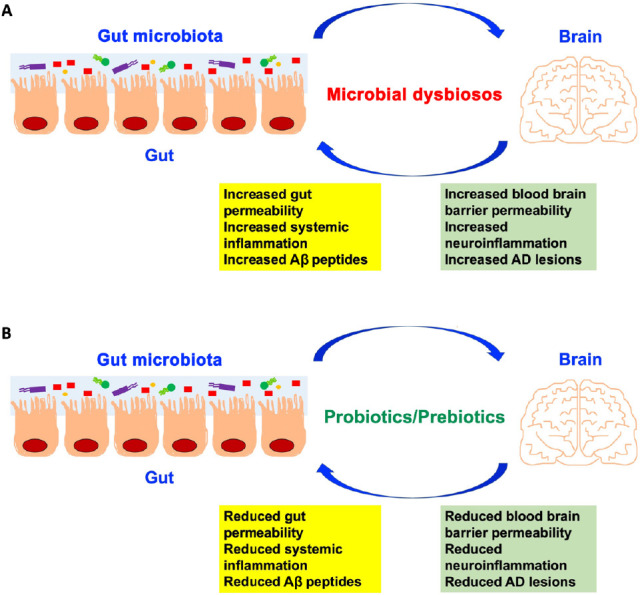Probiotics, prebiotics and their role in Alzheimer's disease.
IF 8.3
2区 材料科学
Q1 MATERIALS SCIENCE, MULTIDISCIPLINARY
引用次数: 10
Abstract
Accumulation of amyloid and dysfunctional tau proteins in the brain, along with the development of dementia, characterizes Alzheimer ’s disease (AD). Although the cause of AD is currently unknown, i t has been shown that the onset of the disease, with amyloid-beta peptide (Aβ) accumulation, occurs 10–20 years before the development of the clinical signs; to date, several factors, including lifestyle habits (such as diet and exercise), chronic infection and inflammation, have been related to AD pathogenesis and progression (Sochocka et al., 2019). In addition, the gut microbial dysbiosis seems to be a critical feature able to characterize AD and regulate Aβ production. Indeed, imbalances in gut microbiota can induce aberrant immune responses which, in turn, can disrupt the local and systemic homeostasis of the host (Figure 1A). Moreover, it has been proposed that the gut microbiota, represented by intestinal microflora, may participate in the development of the disease through a network called “gut-brain axis,” that is a bidirectional signaling mechanism between the central nervous system and the intestinal tract. Gut has the largest nervous system, outside the central nervous system, that is in close interplay with the microbiome (MB), the other human genome. The extraordinary complexity of the intestinal ecosystem is represented by more than 100 trillion of microbial cells and their interaction with the intestinal epithelium can influence brain functionality and behavior. Likely, human MB is a promising target for prevention and therapeutic interventions. Indeed, several approaches have been employed with the aim to reduce age-related dysbiosis in both experimental model and in clinical studies. These include strategies to regulate MB via the administration of probiotics and prebiotics, and dietary interventions. The progress of research on the role of intestinal MB in the development of AD will dictate the future for the employment of proand prebiotics in the prevention/treatment of AD (D’Argenio and Sarnataro, 2019).

益生菌,益生元及其在阿尔茨海默病中的作用。
本文章由计算机程序翻译,如有差异,请以英文原文为准。
求助全文
约1分钟内获得全文
求助全文
来源期刊

ACS Applied Materials & Interfaces
工程技术-材料科学:综合
CiteScore
16.00
自引率
6.30%
发文量
4978
审稿时长
1.8 months
期刊介绍:
ACS Applied Materials & Interfaces is a leading interdisciplinary journal that brings together chemists, engineers, physicists, and biologists to explore the development and utilization of newly-discovered materials and interfacial processes for specific applications. Our journal has experienced remarkable growth since its establishment in 2009, both in terms of the number of articles published and the impact of the research showcased. We are proud to foster a truly global community, with the majority of published articles originating from outside the United States, reflecting the rapid growth of applied research worldwide.
 求助内容:
求助内容: 应助结果提醒方式:
应助结果提醒方式:


